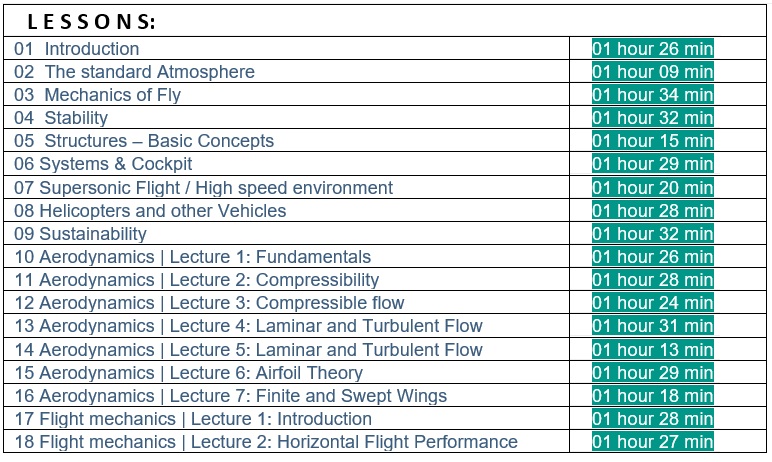About this course
Are you interested in the fundamental concepts behind flying? How does a wing generate lift? And how can we fly as optimally as possible?
This course provides an introduction to the fundamentals of aeronautics, starting with ballooning and continuing on to airplanes and helicopters, aerodynamics and flight mechanics.
First, you will explore the history of flight including ballooning and obtain a basic understanding of aircraft and the earth’s atmosphere. Topics include stability, navigation, propulsion and the structure of aircraft. Block two examines the principles of aerodynamics. You will learn for instance how the shape of an airfoil or wing impacts the amount of lift generated. Block three covers flight mechanics, including various flight phases, such as descending, climbing or cruise, and the most optimal flying conditions for each phase.
What you’ll learn:
- History of flight.
- How the earth’s atmosphere can be modelled and how we can use this for aircraft design.
- Structures, stability, navigation and propulsion of aircraft.
- The fundamental aerodynamic concepts for flying an aircraft.
- How aircraft can optimally climb, descend and cruise.
- How airfoils and wings generate lift.
- Flight mechanics of aircraft.
Length: 25h 30 min
Level: Introductory
Language: English
This course is provided by TuDelft University

Top education and research are at the heart of the oldest and largest technical university in the Netherlands. Our 8 faculties offer 16 bachelor’s and more than 30 master’s programmes. Our more than 25,000 students and 6,000 employees share a fascination for science, design and technology. Our common mission: impact for a better society.
A certificate can relese after the completition. To request it, send an email to info@aerospacengineering.net



